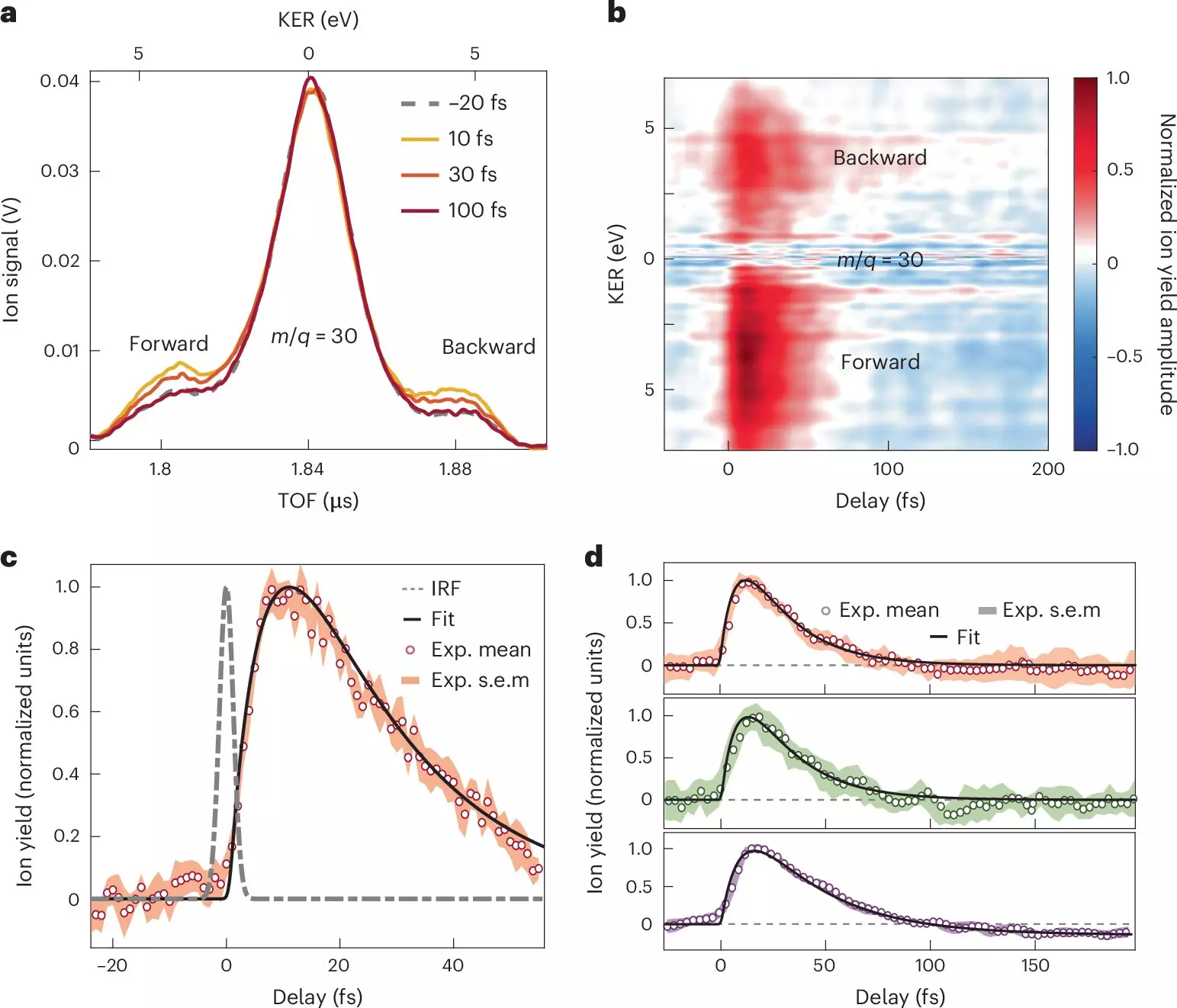At the heart of the natural world, photosynthesis serves as a testament to the elegance of energy conversion. Plants and bacteria have honed a remarkable ability to harness sunlight, converting it into chemical energy. In a parallel, yet distinctly engineered realm, photovoltaic technologies emulate this process by converting solar energy into electricity through the use of solar panels. Both phenomena hinge on the movement of electrons and the intricacies of charge redistribution at the molecular level. This intricate dance within molecules, especially after absorbing light, occurs on a remarkably swift timescale, which is not only intriguing but also fundamental to understanding the mechanisms driving these processes.
The phenomenon of charge transfer is particularly fascinating due to its ultrafast nature, characterized by actions occurring in femtoseconds (10^-15 seconds) and attoseconds (10^-18 seconds). The ability to observe and measure these events with high temporal resolution illuminates the enigmatic world of quantum effects and molecular dynamics. The redistribution of electronic density following light absorption is not a static event; it is a dynamic interplay between electrons and molecular structures. Techniques utilizing ultrashort pulses from high-order harmonic sources or free electron lasers facilitate this observation, pushing the frontiers of scientific inquiry into the initial moments of electron movement after photoionization.
Despite significant advancements in experimental approaches, a comprehensive understanding of these early steps in charge transfer has remained elusive. Recent research conducted by a collaborative team from Politecnico di Milano and various institutions in Madrid marks a pivotal moment in this ongoing exploration. Their work, published in Nature Chemistry, leverages the power of attosecond extreme-ultraviolet pulses to shine a light on the rapid dynamics of molecular systems, specifically the behaviors of donor-acceptor molecules.
The researchers embarked on an ambitious study, exposing nitroaniline molecules to attosecond pulses. The results of their investigations provide rare insights into the fundamental stages of charge transfer. Employing a sophisticated blend of attosecond extreme-ultraviolet-pump combined with few-femtosecond infrared-probe spectroscopy, alongside advanced many-body quantum chemistry calculations, the team captured the intricacies of molecular response with remarkable precision.
Their findings uncovered that electron transfer from the amino group—the electron donor—occurs astonishingly quickly, within a timeframe less than 10 femtoseconds. This rapid transfer is intricately linked to the synchronized movement of both nuclei and electrons, highlighting a fundamental coupling between electron dynamics and molecular structure. Following this initial transfer, a relaxation phase ensues, taking place over a sub-30-femtosecond timeframe as the nuclear wave packet disperses within the excited states of the molecular cation.
The implications of these discoveries extend far beyond the laboratory. By providing a clearer picture of how electron-nuclear coupling operates within donor-acceptor systems, the study deepens our understanding of chemical processes that underpin both natural and synthetic systems. The authors assert that their experimental and theoretical findings could refine conventional depictions of charge migration in organic molecules, propelling the scientific discourse forward.
Furthermore, the knowledge gained from this research sets a promising trajectory for future inquiries into the realm of attosecond science. As researchers continue to unravel the complexities of molecular dynamics, the practical applications of these findings—ranging from enhancing solar energy efficiency to developing new materials with tailored electronic properties—remain an exhilarating prospect.
The recent advancements revealed through attosecond spectroscopy signify a remarkable leap toward comprehending the rapid charge transfer mechanisms within molecular systems. This groundbreaking work not only elucidates the pronounced dance between electrons and nuclei but also ignites a fresh curiosity for subsequent research avenues. As science advances its tools and methods, the quest to unlock the secrets of molecular dynamics promises profound benefits, deepening our grasp of both fundamental chemistry and its applied implications in technology and energy. The continuing exploration into the ultrafast realm serves as a strong reminder of the intricate beauty woven into the fabric of nature, waiting to be unravelled.


Leave a Reply